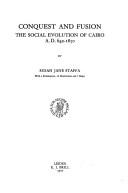| Listing 1 - 3 of 3 |
Sort by
|

ISBN: 9789004492851 9789004047747 Year: 1977 Publisher: Leiden; Boston : BRILL
Abstract | Keywords | Export | Availability | Bookmark
 Loading...
Loading...Choose an application
- Reference Manager
- EndNote
- RefWorks (Direct export to RefWorks)
Historical social --- Middle East and Islamic Studies --- Cairo (Egypt) --- History.
Book
Abstract | Keywords | Export | Availability | Bookmark
 Loading...
Loading...Choose an application
- Reference Manager
- EndNote
- RefWorks (Direct export to RefWorks)
While many periods of history are popularly known by their 'great men', the Enlightenment stands out for the prominence of its 'great groups'. This volume assembles leading scholars using data-driven scholarship to study the networks that made the Enlightenment possible, and contributed to creating a new sense of European identity. From Voltaire's correspondence with Catherine the Great, to Adam Smith's travels on the European continent, mediated and unmediated communication networks were the lifeline of the Enlightenment. What is particularly notable about the Enlightenment is how these different networks were central to their participants' identity. One could not take part in the Enlightenment on one's own.Although some older historical studies highlight the importance of social networks in the Enlightenment, data-driven approaches allow for a more comprehensive and granular understanding of the many different types of networks that formed the intellectual and cultural infrastructure of the Enlightenment throughout Europe. The recent influx of metadata from the correspondences of major Enlightenment figures now allows scholars to study these networks at both the micro and macro levels, and to explore the worlds of the philosophes and the "nodes" in their networks in rich detail.It is at this intersection of Enlightenment historiography, data capture, and social network analysis that the essays collected in this volume all fall, taking advantage of new data sources, configurations, and modes of analysis to deepen our understanding of how Enlightenment sociability worked, who it included, and what it meant for participants.
Social networks --- Enlightenment --- History --- Europe --- Intellectual life --- Correspondence networks --- Sociability --- 18th-century Europe --- Networks --- Digital Humanities --- (Historical) Social Network Analysis
Book
ISBN: 1283097567 9786613097569 0226282066 9780226282060 9781283097567 9780226282077 0226282074 Year: 2011 Publisher: Chicago
Abstract | Keywords | Export | Availability | Bookmark
 Loading...
Loading...Choose an application
- Reference Manager
- EndNote
- RefWorks (Direct export to RefWorks)
Bringing to light a hidden chapter in the history of modern Judaism, Shamanic Trance in Modern Kabbalah explores the shamanic dimensions of Jewish mysticism. Jonathan Garb integrates methods and models from the social sciences, comparative religion, and Jewish studies to offer a fresh view of the early modern kabbalists and their social and psychological contexts. Through close readings of numerous texts-some translated here for the first time-Garb draws a more complete picture of the kabbalists than previous depictions, revealing them to be as concerned with deeper states of consciousness as they were with study and ritual. Garb discovers that they developed physical and mental methods to induce trance states, visions of heavenly mountains, and transformations into animals or bodies of light. To gain a deeper understanding of the kabbalists' shamanic practices, Garb compares their experiences with those of mystics from other traditions as well as with those recorded by psychologists such as Milton Erickson and Carl Jung. Finally, Garb examines the kabbalists' relations with the wider Jewish community, uncovering the role of kabbalistic shamanism in the renewal of Jewish tradition as it contended with modernity.
Cabala. --- Shamanism. --- jewish thought, judaism, religion, religious studies, faith, mysticism, history, historical, social sciences, comparative religions, kabbalists, psychological, psychology, consciousness, study, ritual, mental methods, trance states, heavenly mountains, cabala, shamanism, transformation, milton erickson, carl jung, modernity, empowerment, shamanic hasidism, hasidic trances.
| Listing 1 - 3 of 3 |
Sort by
|

 Search
Search Feedback
Feedback About UniCat
About UniCat  Help
Help News
News